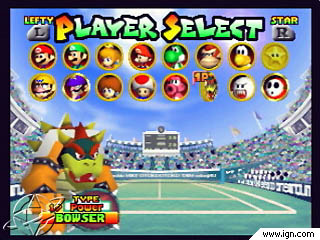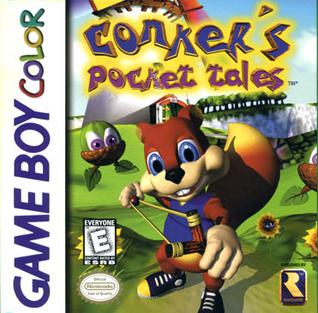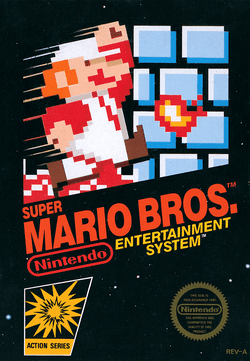I've always wanted to do a list of my favorite Nintendo 64 games, but unfortunately every top ten list for the Nintendo 64 is exactly the same once you get past number 5, the rest being the same titles but in different orders. That's because the Nintendo 64 had a surprisingly dry release schedule, most of it's support coming from first and second parties. In fact, only one title on my list is from a 3rd party! And even then, it's terrible! As such, I really tried to make my list unique; you'll find no Goldeneye 007 here, my friends! So, without further hesitation, I present to you a list of must-play games you're very much aware of:
10: Mario Kart 64 (1997)
Mario Kart 64 would be the life of every nostalgia party if Super Smash Bros. didn't exist. The concepts laid out in it's predecessor for the SNES were fine-tuned to near-perfection in this iteration, and have yet to be bested... in my opinion, of course. The insanity of kart racing with four of your friends is an experience unrivaled even today, and mimicked by many. And yet, not even Nintendo has since bested the formula presented in this game. Every character had their own distinct feel, which is now standard for kart racers, and inevitably lead to a lot of arguments over who got to play as Luigi. One thing that really irked me about the game was the pre-rendered graphics used only for the characters. I mean, really, Nintendo? You have this lovely 64-bit machine that's all about polygons, and these beautiful, polygonal courses in which to race through, and yet the characters look like they're ripped right out of Donkey Kong Country for the SNES. Tangents, and stuff.
9: Pokemon Stadium 2 (2000)
The first Pokemon Stadium was amazing, because you and your friends could have your own adorable, turn-based cock-fights- but on the big screen! Throw in a surprisingly fun assortment of mini-games, and an addicting campaign mode, and you've got yourself Pokemon Stadium... but this one's the second one, and it has oodles more content, and it's based on the best games in the series (this is fact.)!
The Pokemon Stadium games utilized the transfer pak, a peripheral that plugs in to the bottom of your controller. The transfer pak allows you to insert one of your Pokemon games, and interact on-screen with the data on your Game Boy game. This allowed you to use your actual Pokemon when you played the mini-games, and you could earn coins to use at those old Mohegan Suns in Goldenrod Town and Celadon City. I mean, sure, you could battle with your own Pokemon, as opposed to the default ones already on the N64 cartridge, but the mini-games! They had you controlling your little Pokemon doing all sorts of stuff, and there was a championship mode, so the competitive side you and your friends had would come out in the worst way.
Of course, the transfer pak allowed you to do other cool stuff, like mystery gift without needing a friend. This was pretty useful for socially awkward trainers like me. Mystery gift was a feature that let you get items for your Pokemon, sometimes really rare elemental stones, or furniture for your house back in New Bark Town! And Pokemon Stadium 2 even let you look at your room in 3D!
Unfortunately, Pokemon Stadium 2 is probably going to set you back around $50 for some reason, and a release on the Wii's Virtual Console seems unlikely, what with the whole transfer pak issue.
8: San Francisco Rush: Extreme Racing (1997)
I use the word "masochism" in my write-ups a lot, and San Francisco Rush: Extreme Racing stands as a monument to my own self-destruction. I love terrible games; complaining about them is what I do best. Wondering what must have gone through a developer's mind when crafting the perfect level of garbage... it's a high for me. If there were ever a game to showcase how not to program physics, one should only look to Rush.
And yet, is it precisely everything that is wrong with Rush that makes it so good? When I get the crazed look in my eye, my curled, hare-like upper lip, just moments before musing, "Wanna play some RUSH?!" my friends realize the world of pain they're about to withstand. Rush, by definition is a terrible, terrible game. If anything touches the top of your car, it will explode. If you think you lined up your car in the perfect direction for a successful landing from a ramp, you definitely didn't. If you hit the slightest bump, your car will suddenly get up mid-race, and punch Isaac Newton in the face, because fuck physics. Even though you're speeding at what feels like 60 miles-per-hour, the speedometer will lovingly correct you; you are always going 109 mph. There are no exceptions.
What Rush might lack in fun, it more than makes up for in it's music. Anyone who has played Rush will fondly remember "What's Your Name?!" in it's entirety, and let us not forget the iconic "Rave Rush," or better known as, "Wuhhhh, uhhhh, uhhh" (I can't not link it, it's too good. A YouTube commenter remarked that "at 2:10, shit gets serious." I lol'd).
You might be wondering why would I ever rank this higher than Mario Kart 64 on my list of greatest Nintendo 64 games. Honestly, for all that's terrible about Rush, something about it has had me coming back to it much more than most of my vintage games. It's completely insane, and for being so terrible, it actually doesn't infuriate me- I love it for what it is.
7: Star Fox 64 (1997)
Star Fox 64 presents itself as a remake of the SNES classic of the same name, sans the "64." I remember playing this, instantly loving it, and then having what I thought was my expertise at the game completely shattered before my eyes when I discovered the alternate route in the first level, Corneria.
As the science fiction buff I am, Star Fox 64 effortlessly became the Arwing of my eye when I was a wee lad at the age of ten. The game is an on-rails shooter set in a world of anthropomorphic animals flying their super-cool space ships on a mission to stop the evil Andross, an evil, floating monkey head. Strange as it sounds, Star Fox is one of the easiest games to pick up and play, and immerse one's self in. Your path is predetermined as you blast your way through thousands of enemies throughout the course of the game, but as you destroy more and more, you unlock medals that only the most seasoned of gamers can acquire. I think I've earned, like, five or something.
The game is probably the most quoted games of all time, thanks to it's superb vocal work. The game wonderfully conveyed a sense of genuine comradery with it's use of context-sensitive, pre-recorded voice tracks; I truly felt a great urge to help my wing-men when they were in need! Coupled with spot-on controls, the choice to play through the story in a variety of directions, and one of the most bizarre final-bosses I've ever encountered, this game sits proudly on my shelf as a full-blooded masterpiece.
6: Star Wars: Rogue Squadron (1998)
When I was 8-years-old, my parents caved in 'round Christmas time and finally purchased me a Nintendo 64. They couldn't have chosen a better game to compliment my jump to polygonal gaming, with the Star Wars saga being my favorite films of all time. An inter-quel of sorts, Rogue Squadron put you behind the... thing that steers X-Wings, and lets you battle the ever-so-nefarious Empire. On top of the campaign mode, which was quite the healthy challenge, the game had countless cheat codes to further cage one's self in the Star Wars universe, allowing the player to unlock tons of extra ships, play through bonus locales, and catch an early glimpse of the Naboo star-fighter from the much-anticipated Episode I.
Rogue Squadron handled amazingly, and has aged aged incredibly well, thanks in large part to it's compatibility to the Expansion Pak. The campaign is just challenging enough to give gaming veterans a reason to give up, what with only having three lives to lose per level, combined with the sheer fragility of your star-craft. Star Wars fans have every reason to pick this masterpiece up, if not for the faithful recreation of famous Star Wars landmarks, then for the fact that Wedge Antilles himself voices Wedge Antilles. However, looked at subjectively, I firmly believe that Rogue Squadron is good enough to warrant a play-through even from gamers who aren't particularly engrossed in the Star Wars films. Although it's hard to imagine a gamer who doesn't like Star Wars.















